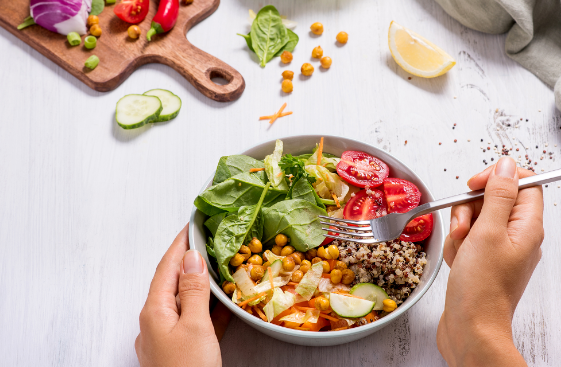BOURSESSENEGAL – Titanium dioxide in food has sparked considerable debate among consumers, health experts, and regulators alike. This substance, commonly used as a colorant, plays a significant role in enhancing the visual appeal of various food products. But what does it mean for your health, and how is it regulated? In this blog post, we’ll explore the uses of titanium dioxide in food, its safety profile, and the current regulatory landscape.
What is Titanium Dioxide?
Titanium dioxide (TiO2) is a white, powdery substance known for its brightness and opacity. It occurs naturally in minerals such as ilmenite, rutile, and anatase. Over the years, the food industry has adopted titanium dioxide as a coloring agent, primarily due to its ability to create a vibrant white hue. It’s commonly found in products like candies, baked goods, and dairy items.
The Role of Titanium Dioxide in Food Products
Titanium dioxide serves multiple functions in food. Here are some of the key roles it plays:
1. Coloring Agent
One of the most prevalent uses of titanium dioxide in food is as a coloring agent. It gives products a bright, appealing appearance, enhancing their visual appeal. This is particularly important in the competitive food market, where presentation can significantly influence consumer choices.
2. Opacifier
In many cases, titanium dioxide acts as an opacifier, making products look less transparent. This is particularly useful in sauces, creams, and desserts, where a uniform texture is desirable.
3. Food Preservation
Titanium dioxide can also help preserve the quality of certain foods by blocking UV light, which can cause deterioration. By protecting the ingredients from light, it helps maintain flavor and freshness over time.
Common Foods Containing Titanium Dioxide
You might be surprised to learn where titanium dioxide shows up in your pantry. Here are some common food items that may contain this additive:
- Confectionery Products: Candies, especially those with a white or brightly colored coating.
- Dairy Products: Some cream cheeses and yogurt products.
- Baked Goods: Frostings, cakes, and pastries often utilize titanium dioxide to achieve a bright white color.
Safety Concerns Surrounding Titanium Dioxide
Despite its widespread use, titanium dioxide has faced scrutiny regarding its safety. Concerns primarily arise from its nano-particle form, which can behave differently from its bulk form. Here’s a closer look at these safety concerns.
Health Implications
The potential health risks associated with titanium dioxide primarily involve its inhalation and ingestion. Studies have suggested that inhaling titanium dioxide in high concentrations may lead to respiratory issues. However, the ingestion of titanium dioxide in food remains a contentious issue.
Recent Research Findings
Recent studies have suggested possible links between titanium dioxide and certain health concerns. Some research indicates that nano-titanium dioxide may lead to inflammation and other adverse effects. However, the results remain inconclusive, and more research is necessary to establish a definitive connection.
Regulatory Perspectives
As safety concerns grow, regulatory bodies around the world have taken a closer look at titanium dioxide in food.
The FDA’s Stance
In the United States, the Food and Drug Administration (FDA) classifies titanium dioxide as generally recognized as safe (GRAS) for use in food products. However, it emphasizes that titanium dioxide must be used in accordance with good manufacturing practices.
The European Union’s Approach
In contrast, the European Food Safety Authority (EFSA) has raised concerns about titanium dioxide. In 2021, the EFSA stated that it could no longer be considered safe as a food additive, leading to a ban on its use in food products within the EU. This decision reflects a more cautious approach compared to the FDA’s stance.
Consumer Awareness and Choices
Given the ongoing discussions about titanium dioxide’s safety, consumer awareness is crucial. Many individuals prefer to make informed decisions about what they eat. Here are some steps you can take to ensure you’re aware of titanium dioxide in food:
Read Food Labels
One of the simplest ways to avoid titanium dioxide is by reading food labels. Look for the ingredient list and check for titanium dioxide (often listed as E171 in Europe). If you see it, you can decide whether or not to consume that product.
Choose Natural Alternatives
As consumers become more health-conscious, many food manufacturers are exploring natural alternatives to titanium dioxide. Some brands are opting for natural colorants derived from fruits and vegetables, which can provide vibrant colors without the potential risks associated with synthetic additives.
Stay Informed
Keep up with the latest research and regulatory changes regarding titanium dioxide. Knowledge is power, and understanding the implications of food additives can help you make better dietary choices.
Conclusion: Navigating the Future of Titanium Dioxide in Food
Titanium dioxide in food remains a controversial topic. While it offers benefits in terms of color and preservation, concerns regarding its safety persist. Regulatory bodies have taken different stances, with the FDA maintaining that it is safe while the EU has banned its use.
As a consumer, being aware of what goes into your food and understanding the implications of additives like titanium dioxide is essential. By reading labels, choosing natural alternatives, and staying informed, you can navigate this complex landscape and make choices that align with your health and wellness goals.
In the end, whether you choose to include products containing titanium dioxide in your diet or not, being informed will empower you to make the best choices for your health. As research evolves, so too will our understanding of titanium dioxide’s role in our food systems. Stay curious and continue to explore the intricacies of what you consume
REFERENCE : https://www.health.com/



